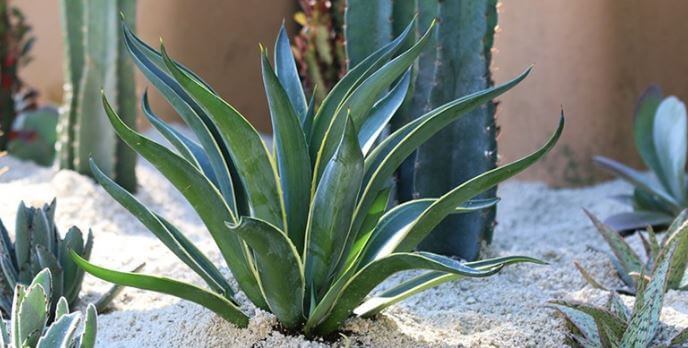Last Updated on March 15, 2023 by a Friendly Gardener
Whether cultivated as indoor houseplants or in your outdoor garden, spiky plants are a wonderful addition to creating texture and interest in your greenery collection. There are numerous plants to choose from and many are perfect choices for beginner gardeners as well.
Indoor and Outdoor Spiky Houseplants
Some of these plants can be easily cultivated outdoors if you have the proper climate conditions. If not, they will be a delightful addition to your home or office.
Agave
Native to the Americas, most agave plants are the impressive varieties we see outside, but some are suited to indoor cultivation like the Agave tequilana “Weber Azul”. They tolerate drought and adore the sun. Their fleshy foliage grows in a rosette. Most species will have grayish to green variegated foliage and each leaf has tiny spikes along the edges. Agaves will eventually flower and when they produce blooms, they have reached the end of their lifespan. Not to fear as they will make offsets at their base that can replace your parent plant when it dies.
Aloe Polyphylla
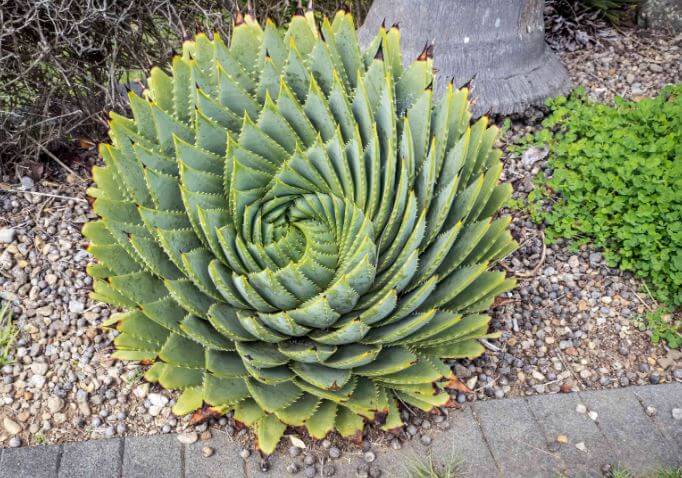
Commonly called the Spiral Aloe, layers of oval leaves curl forming a stunning spiral shape into a symmetrical rosette. It can reach 1.5 feet in height and 3 feet in width outdoors. Tips may have a touch of yellow or purple enhancing their appeal. If you are cultivating in a place with a harsh winter season, grow this spiky plant in a pot so it can be brought inside in the colder months. It will do fine in normal household conditions.
Aloe Vera
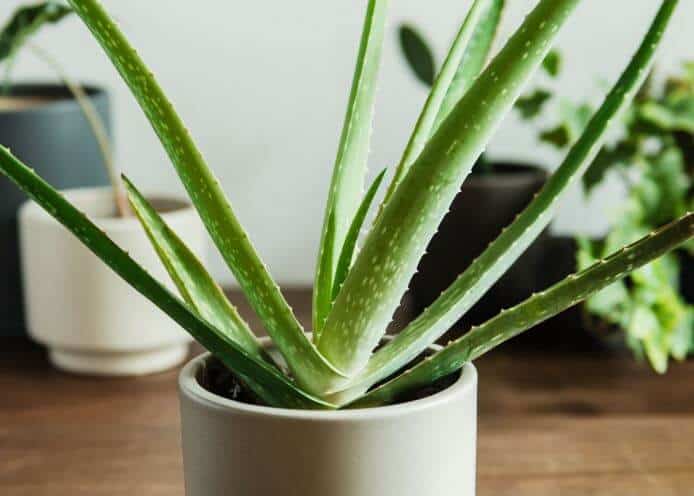
Botanically named the Aloe barbadensis, this is one very popular plant green spiky plant. Known for medicinal qualities, the long leaves contain a gel that can be used for burns, cuts, and skin irritations. Many choose to add aloe vera gel to their foods, and smoothies in particular. Your Aloe Vera will produce offsets at its base so you will be able to propagate easily and gift new little plantlets to friends and families. When planted outside, these plants will spread considerably in the proper environmental climate.
Cacti
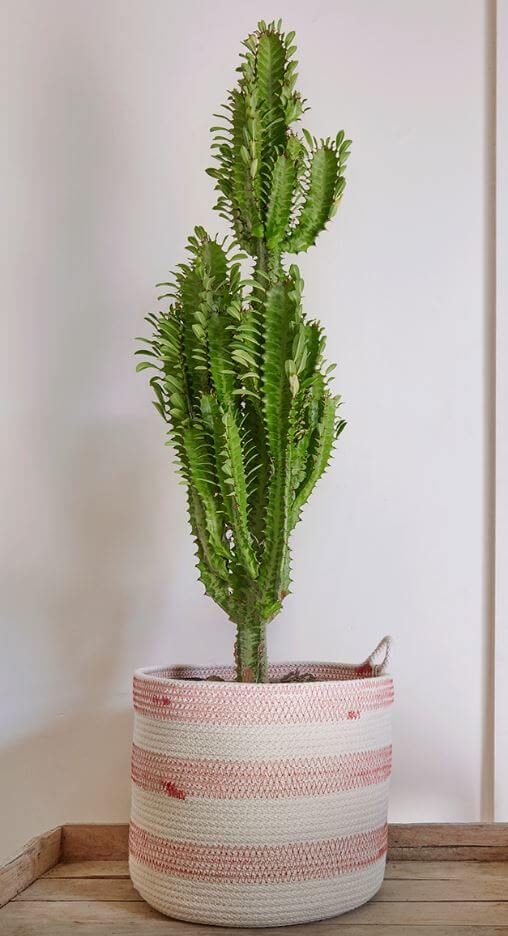
Cacti come in multiple varieties and species. If you live in an arid climate or your indoor climate tends to be dry from heating and air conditioning. Consider cacti like mammillaria perbella also known as the pincushion cactus which produces lovely blooms in the spring. Find a sunny spot on your windowsill for these little jewels.
Crown of Thorns
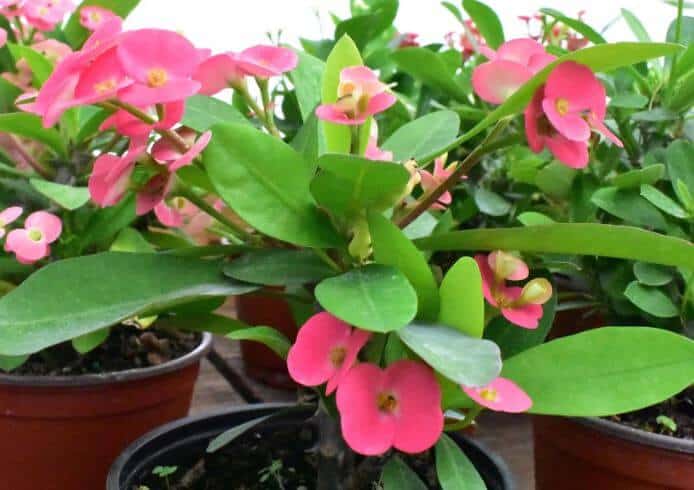
Drought tolerant succulents that resist heat well, the Euphorbia milii is also referred to as the Christ Thorn. This spiky leaf plant features tear-shaped foliage that is thick, fleshy, and spiky. Each leaf features an inch-long spine that is sharp. Madagascar natives will grow to about six feet outside but as an indoor houseplant, they will grow to half that size. Blossoms may appear in white, yellow, orange, pink, or red.
Dragon Tree
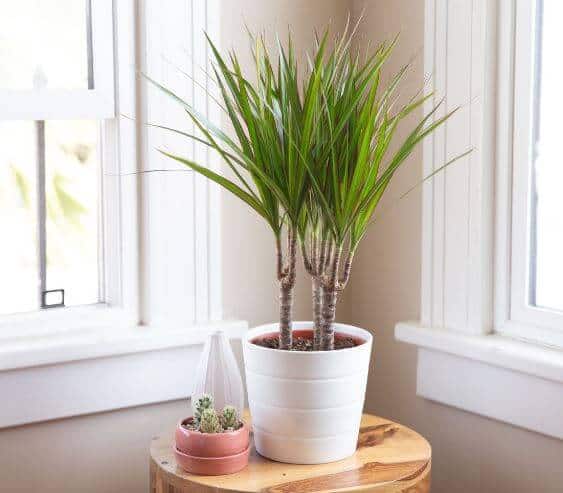
The Dracaena marginata, popularly called the Dragon Tree, is a favorite green spiky plant with brilliant red edges. They are adaptable to various environmental temperatures but do need generous bright, indirect light to thrive. They are very low maintenance making them ideal for those just beginning an indoor garden.
European Fan Palm

The Chamaerops humilis is the only palm that is native to Europe, and if you want an exotic palm in your yard, this spiky plant can do so. It rarely grows more than 5 to 6 feet and produces stunning green foliage that fans out and reaches about 1.5 feet in length and fans out along the trunk including the bottom so its spread can outpace its height. It does not do well in freezing weather, so it will need to be moved indoors in the winter if you are cultivating outside.
Holly
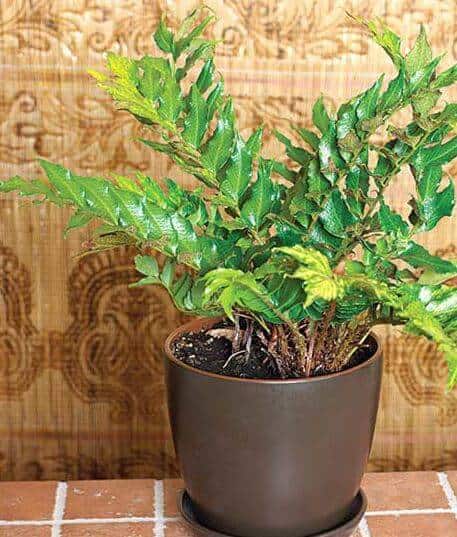
While Holly generally symbolizes the Christmas holidays, it is a striking plant for gardens and performs a great service in providing food and homes for wildlife. Birds eat their characteristic red berries, while bees feast on pollen and nectar. Spiky Holly likes moist soil that’s a bit acidic and well-draining and a place in full sun. Foliage is spiky as a deterrent against undesirable visitors.
Snake Plants
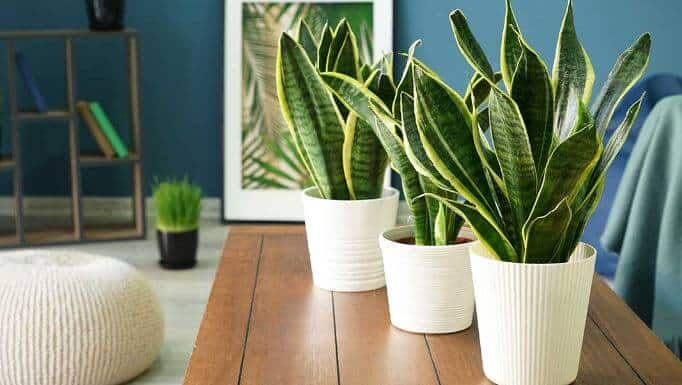
The Sansevieria trifasciata is a popular sculptural plant with spiky leaves. This is a perfect choice if you tend to forget to water your plants or travel often. Also known as the Mother-in-Law’s Tongue plant, this succulent will adapt to both low light, and sunny light conditions making it ideal for any room. They are however at risk for root rot, so let your soil bed dry out before watering anew.
Yucca
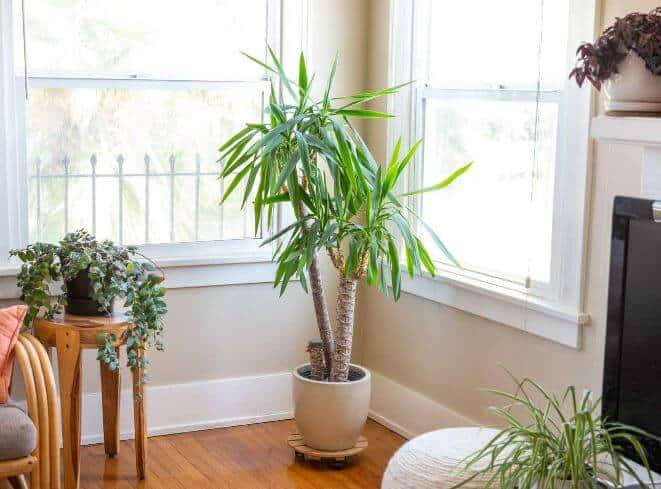
The Yucca somewhat resembles the Dragon Tree. This spiky plant requires very little watering as it stores moisture in its foliage, and it is a plant that needs direct sunlight. They are toxic to family pets, so make sure they are positioned out of reach.
This Mexican native looks like a ball with spikes sitting on a thick column. Outdoors this plant can reach about seven feet. If you are looking for a statement piece for your garden, yucca is a candidate. Yuccas are also hardy plants as they can survive temperatures as low as 5°F, so they do well in the north, too. Free-draining soil and lots of sunlight are the formula for success. The Yucca genus is quite large so there is a wealth of varieties to select among.
Spiky Plant Care
The position is very important if you are cultivating spiky plants indoors. With spikes and sharp edges, they can harm family pets and small children. Windowsills or high spots are ideal. Take care to wear gloves when working with these plants and especially when repotting.
Most of these plants are succulents or cacti so they store moisture meaning they require less watering than leafy houseplants. Paying attention to their growing needs is fundamental. Most spiky plants require well-draining soil and generous sunlight. In containers, these plants will not grow as large as when cultivated outside as space for the root systems is limited. Beware of excessive watering and low-temperature tolerance levels.
A Final Thought
Spiky plants not only add depth and texture to your garden, but outside they can act as your property’s defensive barrier. Some spiky plants offer health benefits like Aloe Vera. There are many reasons to cultivate a spiky plant indoors or in an outside garden from the ease of care to their stunning decorative appeal. They can act as the focal point of your garden, or you can create an impressive display of small cacti on an indoor windowsill or shelf.

